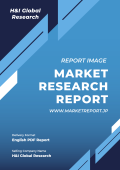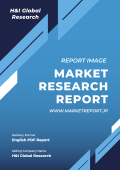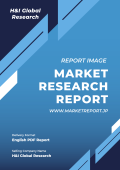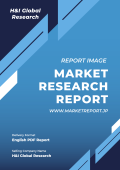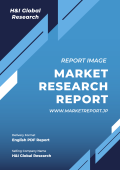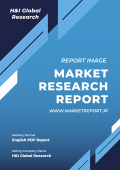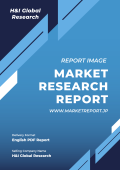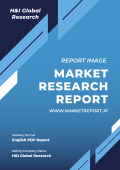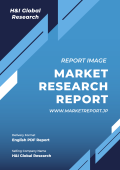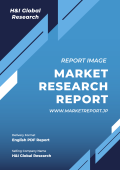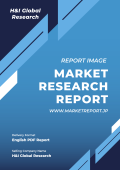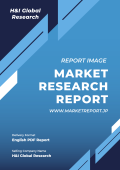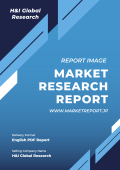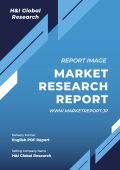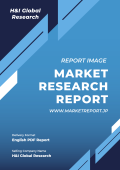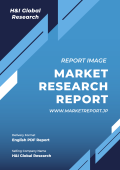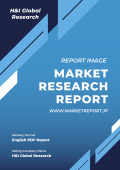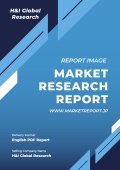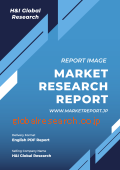| ■ 英語タイトル:Chemicals for Cosmetics and Toiletries Market by Type (Cosmetics Chemicals, Toiletries Chemicals), Application (Skin Care Products, Hair Care Products, Oral Hygiene Products, Bath and Shower Products, Personal Hygiene Products, and Others), and Region 2023-2028
|
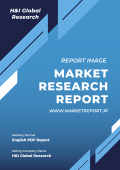 | ■ 発行会社/調査会社:IMARC
■ 商品コード:IMARC23JLY008
■ 発行日:2023年7月
■ 調査対象地域:グローバル
■ 産業分野:化学&材料
■ ページ数:140
■ レポート言語:英語
■ レポート形式:PDF
■ 納品方式:Eメール
|
■ 販売価格オプション
(消費税別)
※販売価格オプションの説明はこちらで、ご購入に関する詳細案内はご利用ガイドでご確認いただけます。
※お支払金額は「換算金額(日本円)+消費税+配送料(Eメール納品は無料)」です。
※Eメールによる納品の場合、通常ご注文当日~2日以内に納品致します。
※レポート納品後、納品日+5日以内に請求書を発行・送付致します。(請求書発行日より2ヶ月以内の銀行振込条件、カード払いも可能)
※IMARC社の概要及び新刊レポートはこちらでご確認いただけます。
*** レポート概要(サマリー)***IMARC社によると、2022年に24,063百万ドルであった世界の化粧品&トイレタリー用化学薬品市場規模は、2023年から2028年の間にCAGR 4.10%成長し、2028年には30,355百万ドルに達すると見込まれます。本報告書では、化粧品&トイレタリー用化学薬品の世界市場について調査し、序論、範囲・手法、エグゼクティブサマリー、イントロダクション、種類別(化粧品用化学薬品、トイレタリー用化学薬品)分析、用途別(スキンケア製品、ヘアケア製品、口腔衛生製品、バス&シャワー製品、その他)分析、地域別(北米、アジア太平洋、ヨーロッパ、中南米、中東・アフリカ)分析、推進要因・制約・機会、バリューチェーン分析、ファイブフォース分析、価格分析、競争状況など、以下の構成でお届けします。なお、本書には、Arkema S.A., Ashland Inc., BASF SE, Biosil Technologies Inc., Croda International plc, Dow Inc., Eastman Chemical Company, Evonik Industries AG (RAG-Stiftung), Fenchem, Hallstar Company, Koninklijke DSM N.V., Lanxess AG, Merck KGaA, Stepan Company, The Lubrizol Corporation (Berkshire Hathaway Inc.), etc.などの企業情報が含まれています。
・序論
・範囲・手法
・エグゼクティブサマリー
・イントロダクション
・世界の化粧品&トイレタリー用化学薬品市場規模:種類別
- 化粧品用化学薬品の市場規模
- トイレタリー用化学薬品の市場規模
・世界の化粧品&トイレタリー用化学薬品市場規模:用途別
- スキンケア製品における市場規模
- ヘアケア製品における市場規模
- 口腔衛生製品品における市場規模
- バス&シャワー製品における市場規模
- その他用途における市場規模
・世界の化粧品&トイレタリー用化学薬品市場規模:地域別
- 北米の化粧品&トイレタリー用化学薬品市場規模
- アジア太平洋の化粧品&トイレタリー用化学薬品市場規模
- ヨーロッパの化粧品&トイレタリー用化学薬品市場規模
- 中南米の化粧品&トイレタリー用化学薬品市場規模
- 中東・アフリカの化粧品&トイレタリー用化学薬品市場規模
・推進要因・制約・機会
・バリューチェーン分析
・ファイブフォース分析
・価格分析
・競争状況 |
Market Overview:
The global chemicals for cosmetics and toiletries market size reached US$ 24,063 Million in 2022. Looking forward, IMARC Group expects the market to reach US$ 30,355 Million by 2028, exhibiting a growth rate (CAGR) of 4.10% during 2023-2028. Increasing demand for cosmetic and personal care products, the growing population, rising disposable incomes, and changing consumer preferences towards personal grooming and appearance enhancement represent some of the key factors driving the market.
Chemicals play a crucial role in formulating cosmetics and toiletries, enabling the creation of products that enhance beauty and personal care routines. These chemicals are carefully synthesized using various processes to ensure their safety and efficacy. They work by interacting with the skin, hair, or nails to produce desired effects. The components of these chemicals vary depending on their purpose, but they often include emollients, surfactants, preservatives, and fragrances. Among these, emollients help moisturize and soften the skin, while surfactants aid in cleansing and foaming. On the other hand, preservatives prevent the growth of harmful bacteria and extend the shelf life of the product, and fragrances provide a pleasant scent. The advantages of using chemicals in cosmetics and toiletries are numerous, including creating products tailored to specific needs, such as moisturizers for dry skin or shampoos for oily hair. Chemicals also enable the development of innovative formulations, incorporating advanced technologies, such as anti-aging compounds or ultraviolet (UV) filters for sun protection.
Chemicals for Cosmetics and Toiletries Market Trends:
The global chemicals for cosmetics and toiletries market is primarily boosted by the increasing demand for cosmetic and personal care products. The growing population, rising disposable incomes, and changing consumer preferences towards personal grooming and appearance enhancement are contributing to the market growth. Moreover, advancements in technology and innovation in the cosmetics and toiletries industry are supporting the market growth. In line with this, key manufacturers are continuously developing new and improved formulations to meet evolving consumer needs, further fueling the market growth. Besides this, the surging demand for plant-based and environmentally friendly chemicals, shifting consumer preference toward clean and sustainable beauty products, and the rising influence of social media are creating a positive outlook for the market. Other factors, including the growing popularity of beauty influencers and bloggers, the expansion of distribution channels, such as e-commerce platforms, and the burgeoning geriatric population, are providing an impetus to the market growth.
Key Market Segmentation:
IMARC Group provides an analysis of the key trends in each segment of the global chemicals for cosmetics and toiletries market, along with forecasts at the global, regional, and country levels from 2023-2028. Our report has categorized the market based on type and application.
Type Insights:
Cosmetics Chemicals
Toiletries Chemicals
The report has provided a detailed breakup and analysis of the chemicals for cosmetics and toiletries market based on the type. This includes cosmetics chemicals and toiletries chemicals. According to the report, cosmetics chemicals represented the largest segment.
Application Insights:
Skin Care Products
Hair Care Products
Oral Hygiene Products
Bath and Shower Products
Personal Hygiene Products
Others
The report has provided a detailed breakup and analysis of the chemicals for cosmetics and toiletries market based on the application. This includes skin care products, hair care products, oral hygiene products, bath and shower products, personal hygiene products, and others. According to the report, skin care products represented the largest segment.
Regional Insights:
North America
United States
Canada
Asia Pacific
China
Japan
India
South Korea
Australia
Indonesia
Others
Europe
Germany
France
United Kingdom
Italy
Spain
Russia
Others
Latin America
Brazil
Mexico
Others
Middle East and Africa
The report has also provided a comprehensive analysis of all the major regional markets, which include North America (the United States and Canada); Asia Pacific (China, Japan, India, South Korea, Australia, Indonesia, and others); Europe (Germany, France, the United Kingdom, Italy, Spain, Russia, and others); Latin America (Brazil, Mexico, and others); and the Middle East and Africa. According to the report, Asia Pacific was the largest market for chemicals for cosmetics and toiletries. Some of the factors driving the Asia Pacific chemicals for cosmetics and toiletries market included the increasing focus on personal hygiene and wellness, the influence of cultural factors and beauty standards, and strategic mergers and acquisitions, collaborations, and partnerships among manufacturers and suppliers in the cosmetics and toiletries industry.
Competitive Landscape:
The report has also provided a comprehensive analysis of the competitive landscape in the global chemicals for cosmetics and toiletries market. Detailed profiles of all major companies have been provided. Some of the companies covered include Arkema S.A., Ashland Inc., BASF SE, Biosil Technologies Inc., Croda International plc, Dow Inc., Eastman Chemical Company, Evonik Industries AG (RAG-Stiftung), Fenchem, Hallstar Company, Koninklijke DSM N.V., Lanxess AG, Merck KGaA, Stepan Company, The Lubrizol Corporation (Berkshire Hathaway Inc.), etc. Kindly note that this only represents a partial list of companies, and the complete list has been provided in the report.
Market Overview:The global chemicals for cosmetics and toiletries market size reached US$ 24,063 Million in 2022. Looking forward, IMARC Group expects the market to reach US$ 30,355 Million by 2028, exhibiting a growth rate (CAGR) of 4.10% during 2023-2028. Increasing demand for cosmetic and personal care products, the growing population, rising disposable incomes, and changing consumer preferences towards personal grooming and appearance enhancement represent some of the key factors driving the market.
Chemicals play a crucial role in formulating cosmetics and toiletries, enabling the creation of products that enhance beauty and personal care routines. These chemicals are carefully synthesized using various processes to ensure their safety and efficacy. They work by interacting with the skin, hair, or nails to produce desired effects. The components of these chemicals vary depending on their purpose, but they often include emollients, surfactants, preservatives, and fragrances. Among these, emollients help moisturize and soften the skin, while surfactants aid in cleansing and foaming. On the other hand, preservatives prevent the growth of harmful bacteria and extend the shelf life of the product, and fragrances provide a pleasant scent. The advantages of using chemicals in cosmetics and toiletries are numerous, including creating products tailored to specific needs, such as moisturizers for dry skin or shampoos for oily hair. Chemicals also enable the development of innovative formulations, incorporating advanced technologies, such as anti-aging compounds or ultraviolet (UV) filters for sun protection.
Chemicals for Cosmetics and Toiletries Market Trends:
The global chemicals for cosmetics and toiletries market is primarily boosted by the increasing demand for cosmetic and personal care products. The growing population, rising disposable incomes, and changing consumer preferences towards personal grooming and appearance enhancement are contributing to the market growth. Moreover, advancements in technology and innovation in the cosmetics and toiletries industry are supporting the market growth. In line with this, key manufacturers are continuously developing new and improved formulations to meet evolving consumer needs, further fueling the market growth. Besides this, the surging demand for plant-based and environmentally friendly chemicals, shifting consumer preference toward clean and sustainable beauty products, and the rising influence of social media are creating a positive outlook for the market. Other factors, including the growing popularity of beauty influencers and bloggers, the expansion of distribution channels, such as e-commerce platforms, and the burgeoning geriatric population, are providing an impetus to the market growth.
Key Market Segmentation:
IMARC Group provides an analysis of the key trends in each segment of the global chemicals for cosmetics and toiletries market, along with forecasts at the global, regional, and country levels from 2023-2028. Our report has categorized the market based on type and application.
Type Insights:
Cosmetics Chemicals
Toiletries Chemicals
The report has provided a detailed breakup and analysis of the chemicals for cosmetics and toiletries market based on the type. This includes cosmetics chemicals and toiletries chemicals. According to the report, cosmetics chemicals represented the largest segment.
Application Insights:
Skin Care Products
Hair Care Products
Oral Hygiene Products
Bath and Shower Products
Personal Hygiene Products
Others
The report has provided a detailed breakup and analysis of the chemicals for cosmetics and toiletries market based on the application. This includes skin care products, hair care products, oral hygiene products, bath and shower products, personal hygiene products, and others. According to the report, skin care products represented the largest segment.
Regional Insights:
North America
United States
Canada
Asia Pacific
China
Japan
India
South Korea
Australia
Indonesia
Others
Europe
Germany
France
United Kingdom
Italy
Spain
Russia
Others
Latin America
Brazil
Mexico
Others
Middle East and Africa
The report has also provided a comprehensive analysis of all the major regional markets, which include North America (the United States and Canada); Asia Pacific (China, Japan, India, South Korea, Australia, Indonesia, and others); Europe (Germany, France, the United Kingdom, Italy, Spain, Russia, and others); Latin America (Brazil, Mexico, and others); and the Middle East and Africa. According to the report, Asia Pacific was the largest market for chemicals for cosmetics and toiletries. Some of the factors driving the Asia Pacific chemicals for cosmetics and toiletries market included the increasing focus on personal hygiene and wellness, the influence of cultural factors and beauty standards, and strategic mergers and acquisitions, collaborations, and partnerships among manufacturers and suppliers in the cosmetics and toiletries industry.
Competitive Landscape:
The report has also provided a comprehensive analysis of the competitive landscape in the global chemicals for cosmetics and toiletries market. Detailed profiles of all major companies have been provided. Some of the companies covered include Arkema S.A., Ashland Inc., BASF SE, Biosil Technologies Inc., Croda International plc, Dow Inc., Eastman Chemical Company, Evonik Industries AG (RAG-Stiftung), Fenchem, Hallstar Company, Koninklijke DSM N.V., Lanxess AG, Merck KGaA, Stepan Company, The Lubrizol Corporation (Berkshire Hathaway Inc.), etc. Kindly note that this only represents a partial list of companies, and the complete list has been provided in the report.
Key Questions Answered in This Report:
How has the global chemicals for cosmetics and toiletries market performed so far, and how will it perform in the coming years?
What are the drivers, restraints, and opportunities in the global chemicals for cosmetics and toiletries market?
What is the impact of each driver, restraint, and opportunity on the global chemicals for cosmetics and toiletries market?
What are the key regional markets?
Which countries represent the most attractive chemicals for cosmetics and toiletries market?
What is the breakup of the market based on the type?
Which is the most attractive type in the chemicals for cosmetics and toiletries market?
What is the breakup of the market based on the application?
Which is the most attractive application in the chemicals for cosmetics and toiletries market?
What is the competitive structure of the global chemicals for cosmetics and toiletries market?
Who are the key players/companies in the global chemicals for cosmetics and toiletries market?
Market Overview:
The global chemicals for cosmetics and toiletries market size reached US$ 24,063 Million in 2022. Looking forward, IMARC Group expects the market to reach US$ 30,355 Million by 2028, exhibiting a growth rate (CAGR) of 4.10% during 2023-2028. Increasing demand for cosmetic and personal care products, the growing population, rising disposable incomes, and changing consumer preferences towards personal grooming and appearance enhancement represent some of the key factors driving the market.
Chemicals play a crucial role in formulating cosmetics and toiletries, enabling the creation of products that enhance beauty and personal care routines. These chemicals are carefully synthesized using various processes to ensure their safety and efficacy. They work by interacting with the skin, hair, or nails to produce desired effects. The components of these chemicals vary depending on their purpose, but they often include emollients, surfactants, preservatives, and fragrances. Among these, emollients help moisturize and soften the skin, while surfactants aid in cleansing and foaming. On the other hand, preservatives prevent the growth of harmful bacteria and extend the shelf life of the product, and fragrances provide a pleasant scent. The advantages of using chemicals in cosmetics and toiletries are numerous, including creating products tailored to specific needs, such as moisturizers for dry skin or shampoos for oily hair. Chemicals also enable the development of innovative formulations, incorporating advanced technologies, such as anti-aging compounds or ultraviolet (UV) filters for sun protection.
Chemicals for Cosmetics and Toiletries Market Trends:
The global chemicals for cosmetics and toiletries market is primarily boosted by the increasing demand for cosmetic and personal care products. The growing population, rising disposable incomes, and changing consumer preferences towards personal grooming and appearance enhancement are contributing to the market growth. Moreover, advancements in technology and innovation in the cosmetics and toiletries industry are supporting the market growth. In line with this, key manufacturers are continuously developing new and improved formulations to meet evolving consumer needs, further fueling the market growth. Besides this, the surging demand for plant-based and environmentally friendly chemicals, shifting consumer preference toward clean and sustainable beauty products, and the rising influence of social media are creating a positive outlook for the market. Other factors, including the growing popularity of beauty influencers and bloggers, the expansion of distribution channels, such as e-commerce platforms, and the burgeoning geriatric population, are providing an impetus to the market growth.
Key Market Segmentation:
IMARC Group provides an analysis of the key trends in each segment of the global chemicals for cosmetics and toiletries market, along with forecasts at the global, regional, and country levels from 2023-2028. Our report has categorized the market based on type and application.
Type Insights:
Cosmetics Chemicals
Toiletries Chemicals
The report has provided a detailed breakup and analysis of the chemicals for cosmetics and toiletries market based on the type. This includes cosmetics chemicals and toiletries chemicals. According to the report, cosmetics chemicals represented the largest segment.
Application Insights:
Skin Care Products
Hair Care Products
Oral Hygiene Products
Bath and Shower Products
Personal Hygiene Products
Others
The report has provided a detailed breakup and analysis of the chemicals for cosmetics and toiletries market based on the application. This includes skin care products, hair care products, oral hygiene products, bath and shower products, personal hygiene products, and others. According to the report, skin care products represented the largest segment.
Regional Insights:
North America
United States
Canada
Asia Pacific
China
Japan
India
South Korea
Australia
Indonesia
Others
Europe
Germany
France
United Kingdom
Italy
Spain
Russia
Others
Latin America
Brazil
Mexico
Others
Middle East and Africa
The report has also provided a comprehensive analysis of all the major regional markets, which include North America (the United States and Canada); Asia Pacific (China, Japan, India, South Korea, Australia, Indonesia, and others); Europe (Germany, France, the United Kingdom, Italy, Spain, Russia, and others); Latin America (Brazil, Mexico, and others); and the Middle East and Africa. According to the report, Asia Pacific was the largest market for chemicals for cosmetics and toiletries. Some of the factors driving the Asia Pacific chemicals for cosmetics and toiletries market included the increasing focus on personal hygiene and wellness, the influence of cultural factors and beauty standards, and strategic mergers and acquisitions, collaborations, and partnerships among manufacturers and suppliers in the cosmetics and toiletries industry.
Competitive Landscape:
The report has also provided a comprehensive analysis of the competitive landscape in the global chemicals for cosmetics and toiletries market. Detailed profiles of all major companies have been provided. Some of the companies covered include Arkema S.A., Ashland Inc., BASF SE, Biosil Technologies Inc., Croda International plc, Dow Inc., Eastman Chemical Company, Evonik Industries AG (RAG-Stiftung), Fenchem, Hallstar Company, Koninklijke DSM N.V., Lanxess AG, Merck KGaA, Stepan Company, The Lubrizol Corporation (Berkshire Hathaway Inc.), etc. Kindly note that this only represents a partial list of companies, and the complete list has been provided in the report.
Market Overview:The global chemicals for cosmetics and toiletries market size reached US$ 24,063 Million in 2022. Looking forward, IMARC Group expects the market to reach US$ 30,355 Million by 2028, exhibiting a growth rate (CAGR) of 4.10% during 2023-2028. Increasing demand for cosmetic and personal care products, the growing population, rising disposable incomes, and changing consumer preferences towards personal grooming and appearance enhancement represent some of the key factors driving the market.
Chemicals play a crucial role in formulating cosmetics and toiletries, enabling the creation of products that enhance beauty and personal care routines. These chemicals are carefully synthesized using various processes to ensure their safety and efficacy. They work by interacting with the skin, hair, or nails to produce desired effects. The components of these chemicals vary depending on their purpose, but they often include emollients, surfactants, preservatives, and fragrances. Among these, emollients help moisturize and soften the skin, while surfactants aid in cleansing and foaming. On the other hand, preservatives prevent the growth of harmful bacteria and extend the shelf life of the product, and fragrances provide a pleasant scent. The advantages of using chemicals in cosmetics and toiletries are numerous, including creating products tailored to specific needs, such as moisturizers for dry skin or shampoos for oily hair. Chemicals also enable the development of innovative formulations, incorporating advanced technologies, such as anti-aging compounds or ultraviolet (UV) filters for sun protection.
Chemicals for Cosmetics and Toiletries Market Trends:
The global chemicals for cosmetics and toiletries market is primarily boosted by the increasing demand for cosmetic and personal care products. The growing population, rising disposable incomes, and changing consumer preferences towards personal grooming and appearance enhancement are contributing to the market growth. Moreover, advancements in technology and innovation in the cosmetics and toiletries industry are supporting the market growth. In line with this, key manufacturers are continuously developing new and improved formulations to meet evolving consumer needs, further fueling the market growth. Besides this, the surging demand for plant-based and environmentally friendly chemicals, shifting consumer preference toward clean and sustainable beauty products, and the rising influence of social media are creating a positive outlook for the market. Other factors, including the growing popularity of beauty influencers and bloggers, the expansion of distribution channels, such as e-commerce platforms, and the burgeoning geriatric population, are providing an impetus to the market growth.
Key Market Segmentation:
IMARC Group provides an analysis of the key trends in each segment of the global chemicals for cosmetics and toiletries market, along with forecasts at the global, regional, and country levels from 2023-2028. Our report has categorized the market based on type and application.
Type Insights:
Cosmetics Chemicals
Toiletries Chemicals
The report has provided a detailed breakup and analysis of the chemicals for cosmetics and toiletries market based on the type. This includes cosmetics chemicals and toiletries chemicals. According to the report, cosmetics chemicals represented the largest segment.
Application Insights:
Skin Care Products
Hair Care Products
Oral Hygiene Products
Bath and Shower Products
Personal Hygiene Products
Others
The report has provided a detailed breakup and analysis of the chemicals for cosmetics and toiletries market based on the application. This includes skin care products, hair care products, oral hygiene products, bath and shower products, personal hygiene products, and others. According to the report, skin care products represented the largest segment.
Regional Insights:
North America
United States
Canada
Asia Pacific
China
Japan
India
South Korea
Australia
Indonesia
Others
Europe
Germany
France
United Kingdom
Italy
Spain
Russia
Others
Latin America
Brazil
Mexico
Others
Middle East and Africa
The report has also provided a comprehensive analysis of all the major regional markets, which include North America (the United States and Canada); Asia Pacific (China, Japan, India, South Korea, Australia, Indonesia, and others); Europe (Germany, France, the United Kingdom, Italy, Spain, Russia, and others); Latin America (Brazil, Mexico, and others); and the Middle East and Africa. According to the report, Asia Pacific was the largest market for chemicals for cosmetics and toiletries. Some of the factors driving the Asia Pacific chemicals for cosmetics and toiletries market included the increasing focus on personal hygiene and wellness, the influence of cultural factors and beauty standards, and strategic mergers and acquisitions, collaborations, and partnerships among manufacturers and suppliers in the cosmetics and toiletries industry.
Competitive Landscape:
The report has also provided a comprehensive analysis of the competitive landscape in the global chemicals for cosmetics and toiletries market. Detailed profiles of all major companies have been provided. Some of the companies covered include Arkema S.A., Ashland Inc., BASF SE, Biosil Technologies Inc., Croda International plc, Dow Inc., Eastman Chemical Company, Evonik Industries AG (RAG-Stiftung), Fenchem, Hallstar Company, Koninklijke DSM N.V., Lanxess AG, Merck KGaA, Stepan Company, The Lubrizol Corporation (Berkshire Hathaway Inc.), etc. Kindly note that this only represents a partial list of companies, and the complete list has been provided in the report.
Key Questions Answered in This Report:
How has the global chemicals for cosmetics and toiletries market performed so far, and how will it perform in the coming years?
What are the drivers, restraints, and opportunities in the global chemicals for cosmetics and toiletries market?
What is the impact of each driver, restraint, and opportunity on the global chemicals for cosmetics and toiletries market?
What are the key regional markets?
Which countries represent the most attractive chemicals for cosmetics and toiletries market?
What is the breakup of the market based on the type?
Which is the most attractive type in the chemicals for cosmetics and toiletries market?
What is the breakup of the market based on the application?
Which is the most attractive application in the chemicals for cosmetics and toiletries market?
What is the competitive structure of the global chemicals for cosmetics and toiletries market?
Who are the key players/companies in the global chemicals for cosmetics and toiletries market?
Figure 1: Global: Chemicals for Cosmetics and Toiletries Market: Major Drivers and Challenges
Figure 2: Global: Chemicals for Cosmetics and Toiletries Market: Sales Value (in Million US$), 2017-2022
Figure 3: Global: Chemicals for Cosmetics and Toiletries Market Forecast: Sales Value (in Million US$), 2023-2028
Figure 4: Global: Chemicals for Cosmetics and Toiletries Market: Breakup by Type (in %), 2022
Figure 5: Global: Chemicals for Cosmetics and Toiletries Market: Breakup by Application (in %), 2022
Figure 6: Global: Chemicals for Cosmetics and Toiletries Market: Breakup by Region (in %), 2022
Figure 7: Global: Chemicals for Cosmetics and Toiletries (Cosmetics Chemicals) Market: Sales Value (in Million US$), 2017 & 2022
Figure 8: Global: Chemicals for Cosmetics and Toiletries (Cosmetics Chemicals) Market Forecast: Sales Value (in Million US$), 2023-2028
Figure 9: Global: Chemicals for Cosmetics and Toiletries (Toiletries Chemicals) Market: Sales Value (in Million US$), 2017 & 2022
Figure 10: Global: Chemicals for Cosmetics and Toiletries (Toiletries Chemicals) Market Forecast: Sales Value (in Million US$), 2023-2028
Figure 11: Global: Chemicals for Cosmetics and Toiletries (Skin Care Products) Market: Sales Value (in Million US$), 2017 & 2022
Figure 12: Global: Chemicals for Cosmetics and Toiletries (Skin Care Products) Market Forecast: Sales Value (in Million US$), 2023-2028
Figure 13: Global: Chemicals for Cosmetics and Toiletries (Hair Care Products) Market: Sales Value (in Million US$), 2017 & 2022
Figure 14: Global: Chemicals for Cosmetics and Toiletries (Hair Care Products) Market Forecast: Sales Value (in Million US$), 2023-2028
Figure 15: Global: Chemicals for Cosmetics and Toiletries (Oral Hygiene Products) Market: Sales Value (in Million US$), 2017 & 2022
Figure 16: Global: Chemicals for Cosmetics and Toiletries (Oral Hygiene Products) Market Forecast: Sales Value (in Million US$), 2023-2028
Figure 17: Global: Chemicals for Cosmetics and Toiletries (Bath and Shower Products) Market: Sales Value (in Million US$), 2017 & 2022
Figure 18: Global: Chemicals for Cosmetics and Toiletries (Bath and Shower Products) Market Forecast: Sales Value (in Million US$), 2023-2028
Figure 19: Global: Chemicals for Cosmetics and Toiletries (Personal Hygiene Products) Market: Sales Value (in Million US$), 2017 & 2022
Figure 20: Global: Chemicals for Cosmetics and Toiletries (Personal Hygiene Products) Market Forecast: Sales Value (in Million US$), 2023-2028
Figure 21: Global: Chemicals for Cosmetics and Toiletries (Other Applications) Market: Sales Value (in Million US$), 2017 & 2022
Figure 22: Global: Chemicals for Cosmetics and Toiletries (Other Applications) Market Forecast: Sales Value (in Million US$), 2023-2028
Figure 23: North America: Chemicals for Cosmetics and Toiletries Market: Sales Value (in Million US$), 2017 & 2022
Figure 24: North America: Chemicals for Cosmetics and Toiletries Market Forecast: Sales Value (in Million US$), 2023-2028
Figure 25: United States: Chemicals for Cosmetics and Toiletries Market: Sales Value (in Million US$), 2017 & 2022
Figure 26: United States: Chemicals for Cosmetics and Toiletries Market Forecast: Sales Value (in Million US$), 2023-2028
Figure 27: Canada: Chemicals for Cosmetics and Toiletries Market: Sales Value (in Million US$), 2017 & 2022
Figure 28: Canada: Chemicals for Cosmetics and Toiletries Market Forecast: Sales Value (in Million US$), 2023-2028
Figure 29: Asia-Pacific: Chemicals for Cosmetics and Toiletries Market: Sales Value (in Million US$), 2017 & 2022
Figure 30: Asia-Pacific: Chemicals for Cosmetics and Toiletries Market Forecast: Sales Value (in Million US$), 2023-2028
Figure 31: China: Chemicals for Cosmetics and Toiletries Market: Sales Value (in Million US$), 2017 & 2022
Figure 32: China: Chemicals for Cosmetics and Toiletries Market Forecast: Sales Value (in Million US$), 2023-2028
Figure 33: Japan: Chemicals for Cosmetics and Toiletries Market: Sales Value (in Million US$), 2017 & 2022
Figure 34: Japan: Chemicals for Cosmetics and Toiletries Market Forecast: Sales Value (in Million US$), 2023-2028
Figure 35: India: Chemicals for Cosmetics and Toiletries Market: Sales Value (in Million US$), 2017 & 2022
Figure 36: India: Chemicals for Cosmetics and Toiletries Market Forecast: Sales Value (in Million US$), 2023-2028
Figure 37: South Korea: Chemicals for Cosmetics and Toiletries Market: Sales Value (in Million US$), 2017 & 2022
Figure 38: South Korea: Chemicals for Cosmetics and Toiletries Market Forecast: Sales Value (in Million US$), 2023-2028
Figure 39: Australia: Chemicals for Cosmetics and Toiletries Market: Sales Value (in Million US$), 2017 & 2022
Figure 40: Australia: Chemicals for Cosmetics and Toiletries Market Forecast: Sales Value (in Million US$), 2023-2028
Figure 41: Indonesia: Chemicals for Cosmetics and Toiletries Market: Sales Value (in Million US$), 2017 & 2022
Figure 42: Indonesia: Chemicals for Cosmetics and Toiletries Market Forecast: Sales Value (in Million US$), 2023-2028
Figure 43: Others: Chemicals for Cosmetics and Toiletries Market: Sales Value (in Million US$), 2017 & 2022
Figure 44: Others: Chemicals for Cosmetics and Toiletries Market Forecast: Sales Value (in Million US$), 2023-2028
Figure 45: Europe: Chemicals for Cosmetics and Toiletries Market: Sales Value (in Million US$), 2017 & 2022
Figure 46: Europe: Chemicals for Cosmetics and Toiletries Market Forecast: Sales Value (in Million US$), 2023-2028
Figure 47: Germany: Chemicals for Cosmetics and Toiletries Market: Sales Value (in Million US$), 2017 & 2022
Figure 48: Germany: Chemicals for Cosmetics and Toiletries Market Forecast: Sales Value (in Million US$), 2023-2028
Figure 49: France: Chemicals for Cosmetics and Toiletries Market: Sales Value (in Million US$), 2017 & 2022
Figure 50: France: Chemicals for Cosmetics and Toiletries Market Forecast: Sales Value (in Million US$), 2023-2028
Figure 51: United Kingdom: Chemicals for Cosmetics and Toiletries Market: Sales Value (in Million US$), 2017 & 2022
Figure 52: United Kingdom: Chemicals for Cosmetics and Toiletries Market Forecast: Sales Value (in Million US$), 2023-2028
Figure 53: Italy: Chemicals for Cosmetics and Toiletries Market: Sales Value (in Million US$), 2017 & 2022
Figure 54: Italy: Chemicals for Cosmetics and Toiletries Market Forecast: Sales Value (in Million US$), 2023-2028
Figure 55: Spain: Chemicals for Cosmetics and Toiletries Market: Sales Value (in Million US$), 2017 & 2022
Figure 56: Spain: Chemicals for Cosmetics and Toiletries Market Forecast: Sales Value (in Million US$), 2023-2028
Figure 57: Russia: Chemicals for Cosmetics and Toiletries Market: Sales Value (in Million US$), 2017 & 2022
Figure 58: Russia: Chemicals for Cosmetics and Toiletries Market Forecast: Sales Value (in Million US$), 2023-2028
Figure 59: Others: Chemicals for Cosmetics and Toiletries Market: Sales Value (in Million US$), 2017 & 2022
Figure 60: Others: Chemicals for Cosmetics and Toiletries Market Forecast: Sales Value (in Million US$), 2023-2028
Figure 61: Latin America: Chemicals for Cosmetics and Toiletries Market: Sales Value (in Million US$), 2017 & 2022
Figure 62: Latin America: Chemicals for Cosmetics and Toiletries Market Forecast: Sales Value (in Million US$), 2023-2028
Figure 63: Brazil: Chemicals for Cosmetics and Toiletries Market: Sales Value (in Million US$), 2017 & 2022
Figure 64: Brazil: Chemicals for Cosmetics and Toiletries Market Forecast: Sales Value (in Million US$), 2023-2028
Figure 65: Mexico: Chemicals for Cosmetics and Toiletries Market: Sales Value (in Million US$), 2017 & 2022
Figure 66: Mexico: Chemicals for Cosmetics and Toiletries Market Forecast: Sales Value (in Million US$), 2023-2028
Figure 67: Others: Chemicals for Cosmetics and Toiletries Market: Sales Value (in Million US$), 2017 & 2022
Figure 68: Others: Chemicals for Cosmetics and Toiletries Market Forecast: Sales Value (in Million US$), 2023-2028
Figure 69: Middle East and Africa: Chemicals for Cosmetics and Toiletries Market: Sales Value (in Million US$), 2017 & 2022
Figure 70: Middle East and Africa: Chemicals for Cosmetics and Toiletries Market: Breakup by Country (in %), 2022
Figure 71: Middle East and Africa: Chemicals for Cosmetics and Toiletries Market Forecast: Sales Value (in Million US$), 2023-2028
Figure 72: Global: Chemicals for Cosmetics and Toiletries Industry: Drivers, Restraints, and Opportunities
Figure 73: Global: Chemicals for Cosmetics and Toiletries Industry: Value Chain Analysis
Figure 74: Global: Chemicals for Cosmetics and Toiletries Industry: Porter's Five Forces Analysis
*** 免責事項 ***https://www.globalresearch.co.jp/disclaimer/
